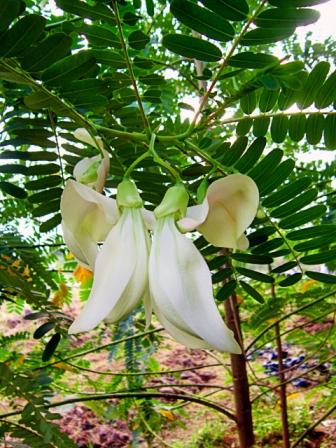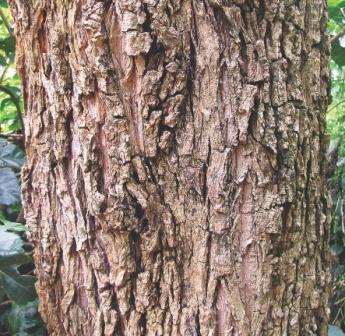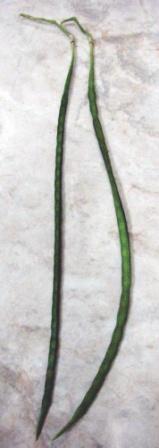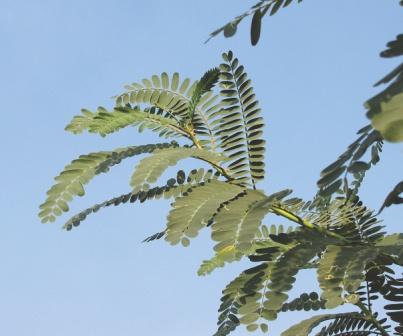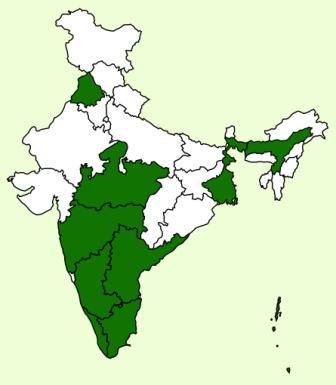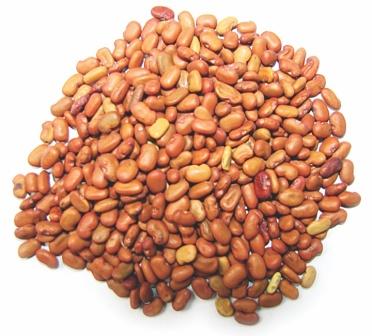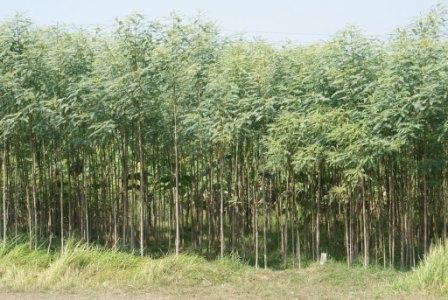Natural Regeneration :
- It is propagated by seed.
Artificial Regeneration :
- Propagated by direct sowing and nursery raised seedlings.
Seed collection and Storage :
- Seeds are collected during April to May.
- It is well dried in sun before storage.
- Seed rate 15000-16000/Kg.
- It is viable for one year under ordinary storage condition.
- Germination capacity is 80 - 90 %
Seed Treatment :
- No Pre-sowing treatment is required.
Nursery Technique :
- The seed is directly sown in the polybags in April - May
- Polythene bag with filled with sandy loam soil and FYM
- Germination takes place within 3-5 days.
- Watering should be on alternate day after germination.
- Seedlings grow very rapidly and fit for planting out in three month.
Plantation technique :
Nursery Raised Seedlings:
- Three month old nursery raised seedlings are selected for planting in pit size of 30 m3.
- Optimum Spacing adopted is 1.2 m x 1.2 m
- The seedlings should be planted out during the onset monsoon in well drained pits or contour trenches.
Direst Sowing:
- The species is best raised by direct sowing in lines 30 cm wide and 1.8 cm apart.
- Seeds may be sown in the patches at an espacement of 1.8 x 1.8 x 1.8 m with about 3 seeds in each patch.
- Sowing done after the onset of monsoon.
Care & Disease Control :
- Regular weeding and soil working is essential.
Irrigation :
Recommended Harvest :
- First harvest after 8 months and subsequent harvest at an interval of 60 -80 days.
Yield :
- Forage production 4 to 9 kg / tree/year.
Agro Forestory :
- Suitable for intercropping with agricultural crops and black pepper.
Major uses :
- It is valued for food, fodder, green manure and pulp.
- It is used for reforesting eroded and grassy wastelands.
- Leaves and pods are valued fro highly palatable fodder.
- It is used for making good semi-chemical process pulp which can be blended with long fiber pulp to make cheaper paper.
- The trees is grown for ornamental
Other uses :
Bark exudate and seed endosperm gums are produced. The clear bark gum is used in adhesives as a substitute for gum arabic.The bark yields tannins.The white wood is soft and rather light. The density of the wood increases with age. however, the timber from 5 to 8 year-old trees can be used in house construction or as craft wood.
Market details :
- Approximately Rs.2300 – Rs.2600/ton of fuel wood.


